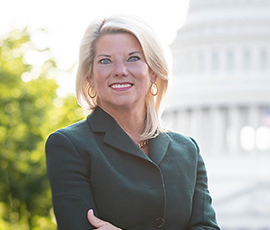Lower America’s Trade Deficit: Say “Konnichiwa” to Japanese Visitors
April 26, 2019 By Tori Emerson Barnes, Executive Vice President, Public Affairs and Policy, U.S. Travel Association
President Donald Trump will meet briefly with Japanese Prime Minister Shinzō Abe in Washington today. The meeting—and another longer visit next month in Japan—will reportedly center around ways to lower America’s $56.6 billion overall trade deficit with Japan.
While the popularity of Japanese cars and electronics presents a difficult hurdle in lowering America’s manufacturing deficit, there is an industry that continues to enjoy a trade surplus with Japan: travel.
In 2017, Japan was the second-largest market for overseas visitation to the U.S. with 3.8 million arrivals. These visitors spent $16.6 billion on goods and services while traveling in the U.S., creating a travel trade surplus of $12 billion.
Without this healthy surplus, the U.S. trade deficit with Japan would have been a staggering 21% higher.
Some may not immediately think of travel as an export, but it is one of the most important industries the U.S. can “sell” to the world. We may buy plenty of cars and electronics from Japanese-owned companies, but it counts as an export when the Japanese come spend their currency on our goods and services, even when the transactions are on this side of the pond. The U.S. is therefore exporting hotel stays and airline tickets to Japan, as well as cultural experiences such as shopping, fine dining, sightseeing and sports.
The U.S. is by far the preferred destination for the Japanese market: more Japanese visited the U.S. than regional neighbors China, South Korea or Taiwan. Japanese travel to the U.S. outpaced all of western Europe combined.
But despite Japanese enthusiasm for all things American, visitation to the U.S. has been declining an average of 2% annually since 2000, while regional visitations within Asia increased an average of 1.4% annually in that same time period.
Acting on certain legislative priorities can reverse declining visitation numbers and allow the U.S. to tap into the full potential of this high-spending market. Japan is already a member of the Visa Waiver Program, but visitation can grow even further by expanding the Preclearance program to Tokyo’s and Osaka’s international airports. Also, the reauthorization of Brand USA—the destination marketing organization tasked with promoting the U.S. as a travel destination—will allow America to reach more of the Japanese market and sell itself to prospective visitors.
The Japanese inbound market is incredibly valuable, and its growth should be a top priority for the administration. Streamlining Customs entry points and emphasizing travel promotion can bolster Japanese visitation and spending—and in turn, help lower America’s overall trade deficit.
In This The Itinerary
U.S. Travel Association
For more information about this blog, please contact us at:
